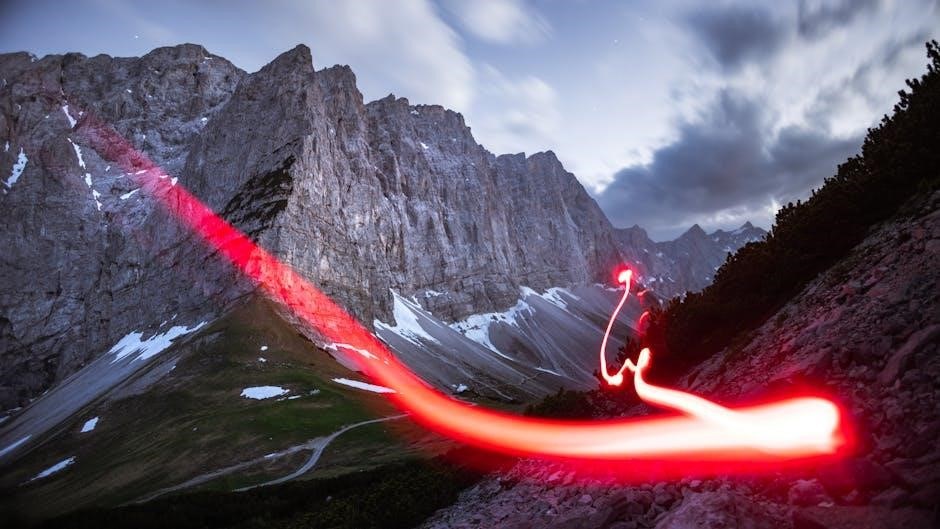Red Rock Climbing Guides offer expert-guided climbing experiences in Red Rock Canyon, near Las Vegas․ With over 20 years of experience, they provide safe, fun, and affordable climbs for all skill levels, ensuring memorable adventures in this stunning natural wonder․
Overview of Red Rock Canyon
Red Rock Canyon, located just 20 miles west of Las Vegas, Nevada, is a stunning National Conservation Area renowned for its unique red sandstone cliffs and canyons․ This natural wonder attracts climbers, hikers, and outdoor enthusiasts from around the world․ The canyon features a diverse landscape, with towering formations that offer challenges for all skill levels․ Its proximity to urban areas makes it an accessible destination for both day trips and extended stays․ The area is managed by the Bureau of Land Management to preserve its natural beauty and recreational opportunities․ Red Rock Canyon is not only a climber’s paradise but also a haven for photography, canyoneering, and wildlife exploration, making it a must-visit destination for nature lovers․
Importance of Climbing Guides in Red Rock
Climbing guides play a crucial role in ensuring a safe and enjoyable experience for climbers in Red Rock Canyon․ They offer expert knowledge of the terrain, helping climbers choose routes that match their skill levels and physical abilities․ Guides are trained to identify potential hazards, such as loose rocks or unstable formations, and provide instruction on proper climbing techniques․ Their expertise minimizes risks and enhances the overall adventure․ Additionally, guides are familiar with local regulations and environmental guidelines, promoting sustainable climbing practices․ For both beginners and experienced climbers, hiring a certified guide can significantly improve safety, confidence, and the quality of the climbing experience in Red Rock’s unique and challenging landscape․
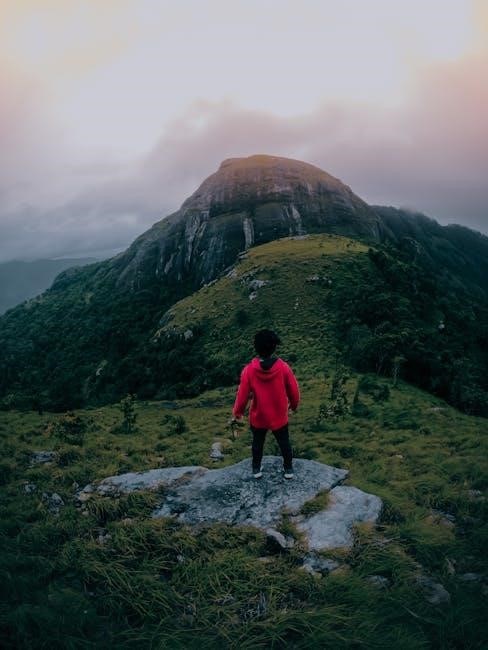
Types of Climbing in Red Rock
Red Rock Canyon offers diverse climbing experiences, including sport, traditional, and bouldering․ Each style provides unique challenges, attracting climbers of all skill levels to this iconic destination․
Sport Climbing
Sport climbing in Red Rock Canyon is a popular choice, characterized by its pre-drilled holes and permanent bolts for a more accessible experience․ Climbers focus on physical and mental challenges rather than gear placement, making it ideal for those who prefer a faster-paced ascent․ The canyon’s limestone cliffs offer a variety of sport routes, ranging from single-pitch climbs to longer multi-pitch adventures․ Many routes feature stunning views of the surrounding landscape, adding to the appeal․ Sport climbing is particularly favored by climbers of all skill levels due to its ease of access and well-maintained routes․ However, climbers must still carry essential gear like quickdraws, ropes, and climbing shoes to ensure a safe and enjoyable experience․
Traditional Climbing
Traditional climbing in Red Rock Canyon offers a more immersive and self-reliant experience, as climbers place and remove their own gear while ascending․ This style emphasizes problem-solving and adaptability, making it a great way to connect with the natural environment․ Traditional routes often involve cracks, chimneys, and other unique rock features, requiring a deep understanding of gear placement and anchoring techniques․ Climbers must carry a rack of cams, nuts, and other equipment to secure their path․ The physical and mental challenges of traditional climbing attract experienced climbers seeking adventure and a deeper connection to the terrain․ Red Rock Canyon provides ample opportunities for traditional climbs, with its diverse landscape offering routes for all skill levels․
Bouldering
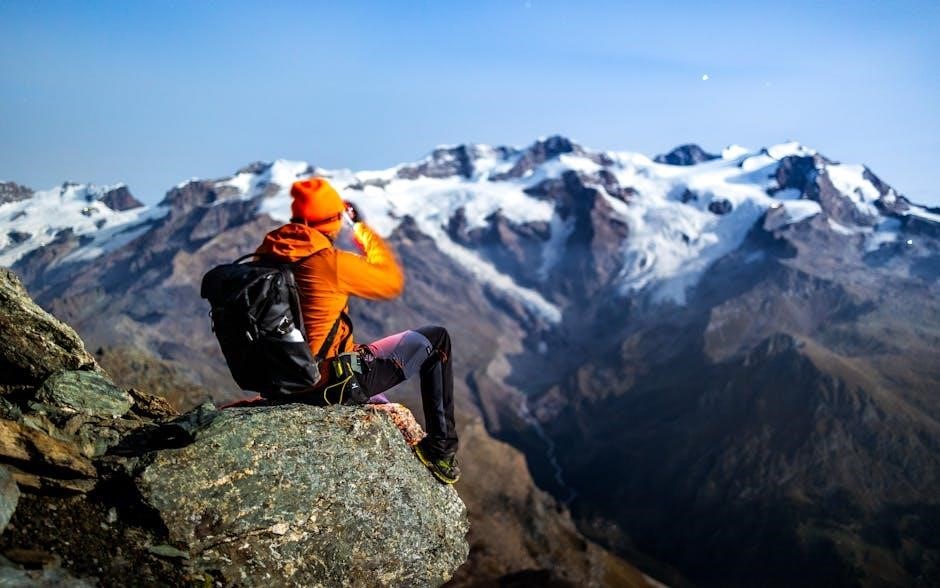
Bouldering is a popular form of climbing in Red Rock Canyon that focuses on short, low-level rock formations, typically below 15 feet․ It emphasizes strength, technique, and problem-solving, as climbers work to conquer unique rock features and sequences․ Unlike sport or traditional climbing, bouldering does not require ropes or extensive gear—just climbing shoes, chalk, and a crash pad for safety․ Red Rock offers numerous bouldering opportunities, with its sandstone boulders providing a variety of challenges for climbers of all skill levels․ The compact size of bouldering problems allows climbers to practice and refine their skills in a condensed, accessible format․ Many climbers visit Red Rock specifically for its world-class bouldering routes, which are scattered throughout the canyon․
Popular Climbing Routes
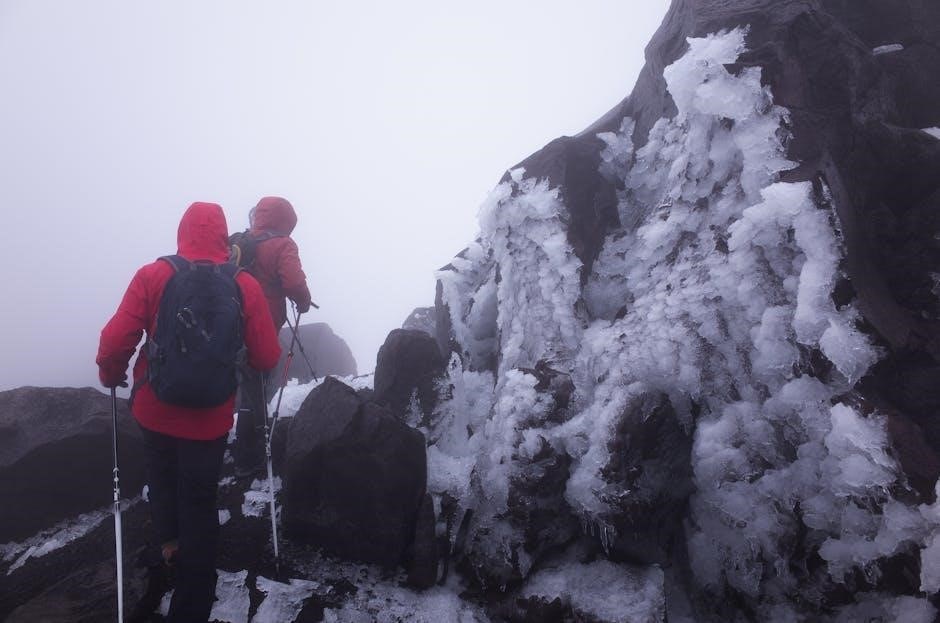
Red Rock Canyon features iconic climbs like Tunnel Vision, Crimson Chrysalis, and Epinephrine, offering routes for all skill levels with breathtaking views and unique sandstone formations․
Beginner-Friendly Routes
Red Rock Canyon offers excellent routes for climbers just starting out, with gentle grades and straightforward terrain․ Popular options include Old Yeller and Aladdin’s Lamp, both graded around 5․5 to 5․8․ These routes provide ample hand and footholds, making them ideal for building confidence․ The Calico Tanks area is another hotspot, featuring short, well-bolted sport climbs perfect for learning techniques․ Kraft Boulders also offers easy boulder problems, allowing climbers to practice movement skills in a low-stakes environment․ These routes are well-suited for those new to climbing, offering a mix of sport and traditional options to hone skills while enjoying scenic vistas․
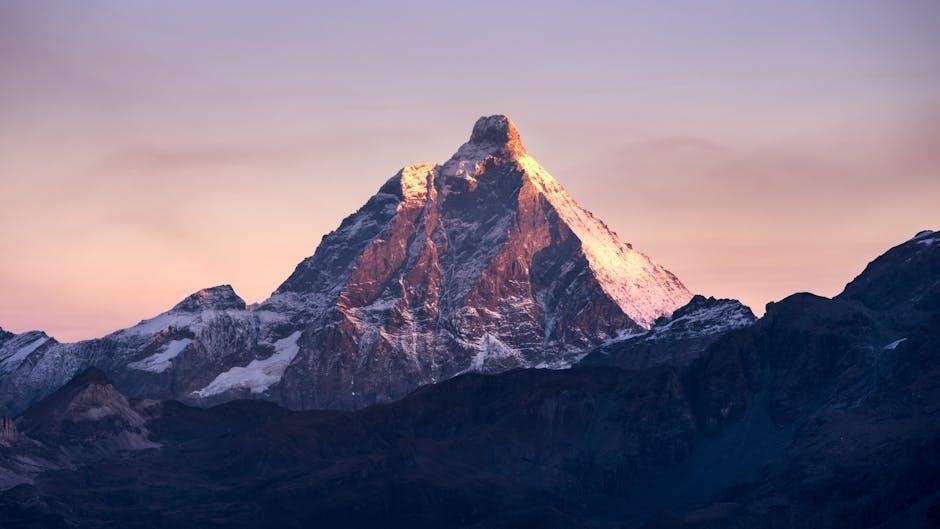
Intermediate Routes
For climbers seeking a step up from beginner routes, Red Rock Canyon offers a variety of intermediate options that challenge without overwhelming․ Routes like Armatron (5․9) and Epinephrine (5․10+) provide a mix of physical and mental challenges, featuring steeper terrain and more complex sequences․ The Oz area is particularly popular, offering sport and traditional climbs graded around 5․9 to 5․11․ These routes are ideal for refining techniques such as jamming, edging, and route-finding․ Climbers can expect exposure, varied rock types, and stunning views․ Intermediate routes in Red Rock are well-suited for building strength and confidence, preparing climbers for more advanced adventures․ proper gear and precautions are essential for a safe and enjoyable experience․
Advanced Routes
Red Rock Canyon offers thrilling advanced routes for experienced climbers seeking a challenge․ Routes like Inti Watana (5․10c) and Yankee Doodle (5․11a) are renowned for their technical difficulty and physical demands․ These climbs feature steep overhangs, intricate sequences, and exposed positions․ Advanced climbers will appreciate the mental and physical test these routes provide․ The Black Velvet Canyon area is particularly popular, offering long, committing climbs with stunning views․ Proper technique, strength, and route-finding skills are essential․ Climbers should be comfortable with lead climbing, advanced belaying, and managing complex gear placements․ These routes are a testament to Red Rock’s reputation as a world-class climbing destination for experienced adventurers seeking to push their limits․
Climbing Seasons and Weather
Red Rock Canyon offers year-round climbing, with fall and spring being ideal due to mild temperatures (50-80°F)․ Summer heat exceeds 100°F, while winters are cooler (30-60°F)․ Weather awareness is crucial for safe climbing․
Best Time to Climb
The best time to climb in Red Rock Canyon is during the fall (September to November) and spring (March to May), when temperatures are mild, ranging from 50°F to 80°F․ These seasons offer ideal conditions for both sport and traditional climbing, with comfortable weather that enhances endurance and grip․ Summer months are less favorable due to extreme heat, often exceeding 100°F, which can make climbing dangerous and exhausting․ Winters are cooler, with temperatures between 30°F and 60°F, but can be unpredictable with occasional cold fronts․ Planning climbs during early morning or late afternoon in warmer months is recommended to avoid direct sunlight and heat exposure․
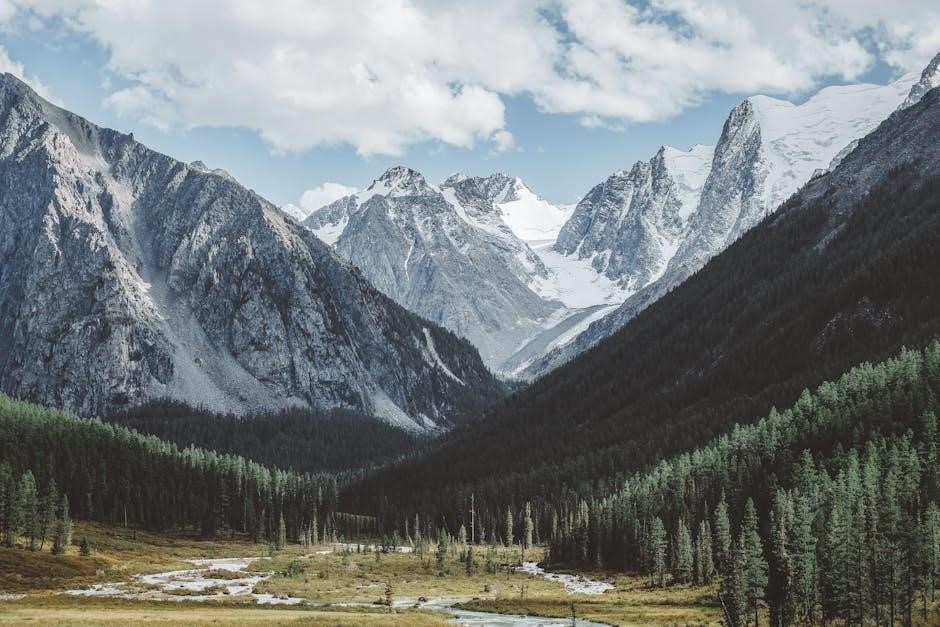
Weather Conditions
Red Rock Canyon experiences a varied climate, with extreme heat in summer and mild winters․ Climbers should be aware of the arid desert conditions, characterized by low humidity and intense sunlight․ Summer months often see temperatures soaring above 100°F, making hydration crucial․ Winter days are cooler, with temperatures ranging from 40°F to 60°F, but nights can drop significantly․ Spring and fall offer stable weather, with clear skies and moderate temperatures․ Unexpected windstorms and rare thunderstorms during the monsoon season (late summer) can create hazardous conditions․ Climbers should monitor forecasts and be prepared for sudden changes, such as flash floods in canyon areas․ Proper gear, including sunscreen and layers, is essential to adapt to Red Rock’s unpredictable weather patterns․
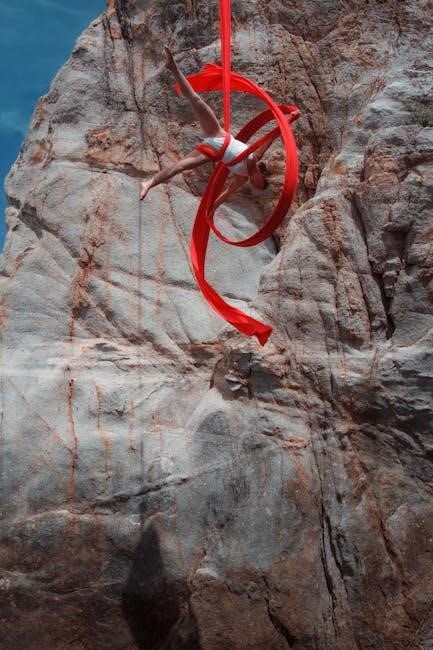
Climbing Safety and Precautions
Climbing safety is crucial due to inherent risks․ Preparedness, proper techniques, and environmental awareness are key․ Always assess abilities and conditions to minimize accidents and ensure a safe experience․
Safety Measures
Ensuring safety while climbing in Red Rock requires careful preparation and adherence to best practices․ Always inspect climbing equipment for wear and tear, and use proper harnesses and ropes․ Guides recommend double-checking knots and belay devices before starting․ Assessing route difficulty according to skill levels helps prevent accidents․ Climbers should learn proper techniques for anchoring and descending․ Weather conditions, such as sudden rain or extreme heat, can pose risks, so staying informed is crucial․ Carrying a first aid kit and knowing basic rescue protocols is essential․ Understanding emergency signaling and communication methods is also vital․ By following these measures, climbers can minimize risks and enjoy a safer experience in Red Rock Canyon․
Necessary Gear
Climbing in Red Rock requires specific gear to ensure a safe and enjoyable experience․ Essential items include a sturdy climbing harness, a durable climbing rope, and a reliable belay device․ Carabiners, quickdraws, and cams are vital for sport and traditional climbing․ Proper footwear, such as climbing shoes, provides the needed grip on rocks․ Helmets are mandatory for protection against falling debris․ Additionally, bring gloves for better grip and chalk to keep hands dry․ A first aid kit, navigation tools, and extra water are also recommended․ For multi-pitch routes, a headlamp and emergency shelter may be necessary․ Always ensure gear is in good condition and suitable for the type of climb․ Consulting with guides or local shops can help climbers acquire the right equipment for their adventure․
Rescue Operations
Red Rock Canyon has a well-organized rescue system to assist climbers in emergencies․ Local rescue teams, including Las Vegas Metro Search and Rescue, are trained to handle climbing-related incidents․ Climbers should always carry a cell phone or satellite communication device to call for help․ In case of an emergency, stay calm and wait for professional assistance․ It’s crucial to know basic first aid and how to secure an injured climber․ Rescue operations can be delayed due to remote locations, so prevention is key․ Climbers are encouraged to inform someone of their itinerary and expected return time․ Guides often carry emergency equipment and know how to respond until help arrives․ Always be prepared and aware of your surroundings to minimize risks․
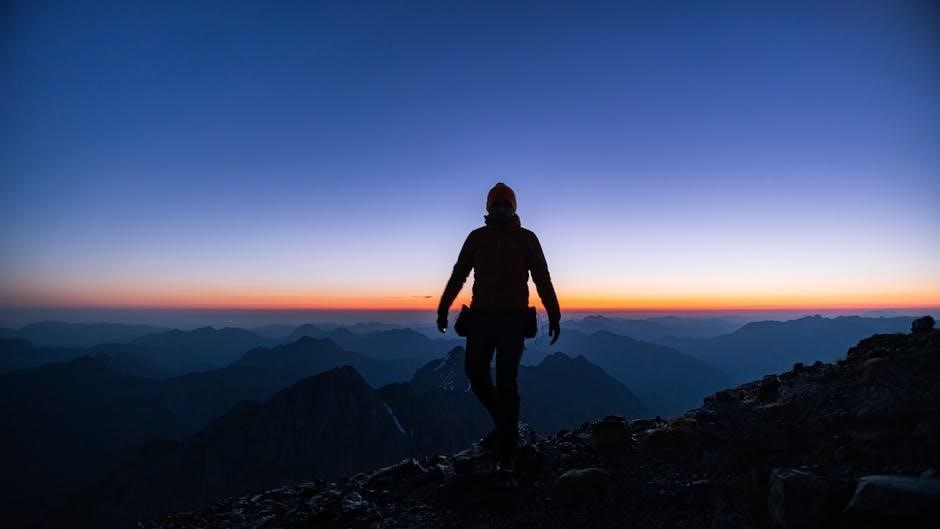
Red Rock Climbing Guides Services
Red Rock Climbing Guides offer expert-led tours, instructional sessions, and personalized climbing experiences tailored to all skill levels, ensuring safe and memorable adventures in the canyon․
Guide Qualifications
Red Rock climbing guides are highly qualified professionals with extensive experience and certifications․ Many hold certifications from reputable organizations like the American Mountain Guides Association (AMGA) or the International Federation of Mountain Guides Associations (IFMGA)․ These guides undergo rigorous training in rock climbing techniques, safety protocols, and emergency response․ They possess deep knowledge of Red Rock’s unique terrain, ensuring climbers navigate safely and efficiently․ Additionally, guides are often certified in wilderness first aid and CPR, prepared to handle medical emergencies․ Their expertise, combined with excellent communication skills, fosters trust and confidence among climbers of all skill levels․ Regular reviews and high ratings from clients further attest to their professionalism and reliability․
Services Offered
Red Rock climbing guides provide a wide range of services tailored to meet the needs of climbers at all skill levels․ They offer guided climbs on both beginner and advanced routes, ensuring a safe and enjoyable experience․ Many guides also provide instructional courses, teaching essential climbing techniques, knot-tying, and safety protocols․ Custom itineraries are available, allowing climbers to select routes that match their abilities and interests․ Additionally, guides often supply equipment rentals, eliminating the need for climbers to bring their own gear․ Some services include pre-climb safety briefings, emergency preparedness, and photography to capture memorable moments․ These comprehensive offerings make Red Rock climbing guides an invaluable resource for climbers visiting the area․
Cost and Booking
The cost of Red Rock climbing guides varies based on the type and duration of the climb, as well as the guide’s experience; Half-day trips typically range between $100 to $200 per person, while full-day excursions can cost $200 to $400․ Private climbs are more expensive, while group tours are often cheaper․ Booking can be done through the guide service’s website, by phone, or in-person at local climbing shops․ Many guides require a deposit to secure a reservation, with the balance paid before the climb․ Cancellations must be made at least 48 hours in advance to avoid penalties․ It is advisable to book early, especially during peak seasons, to ensure availability․ Some services offer discounts for larger groups or repeat customers․
Local Amenities and Attractions
Red Rock Canyon offers stunning natural beauty, with trails, picnic areas, and scenic drives․ Nearby Las Vegas provides world-class dining, entertainment, and cultural experiences, making it a unique blend of adventure and leisure․
Accommodation Options
Visitors to Red Rock Canyon have a variety of accommodation options to suit different preferences and budgets․ Camping enthusiasts can choose from developed campsites with basic amenities or primitive sites for a more immersive outdoor experience․ Hotels and resorts in nearby Las Vegas offer luxury and convenience, with many providing easy access to Red Rock Canyon․ Vacation rentals, such as cabins and cottages, are also popular for those seeking a cozy, home-like stay․ Additionally, there are several lodges and bed-and-breakfasts in the surrounding areas, offering charming accommodations with scenic views․ These options ensure climbers and visitors can find a comfortable place to rest and prepare for their adventures in Red Rock․
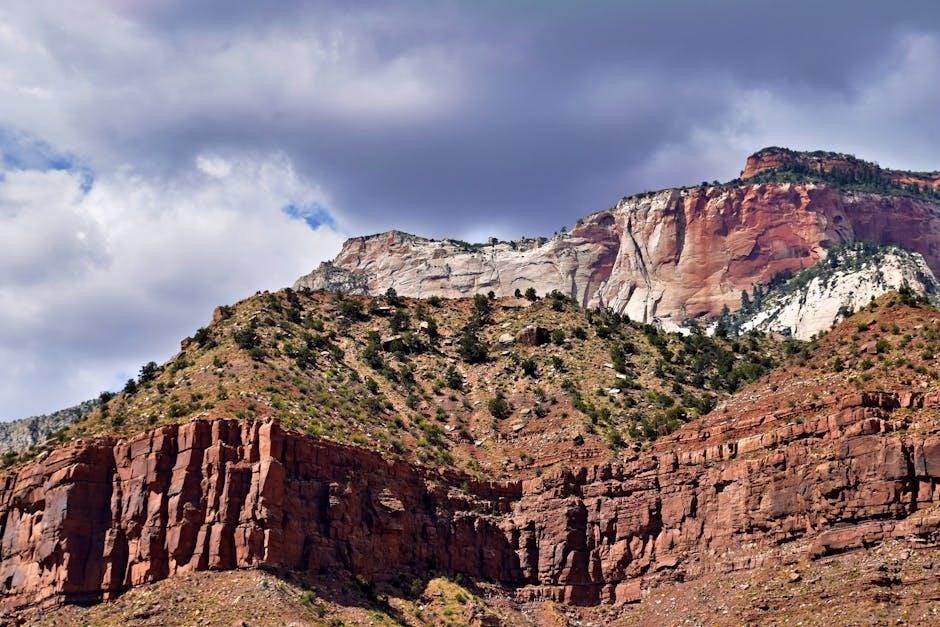
Local Climbing Shops
Red Rock Canyon is supported by several local climbing shops that cater to climbers’ needs․ These shops offer a wide range of climbing gear, including ropes, harnesses, shoes, and accessories․ Many of them also provide rental options for those who prefer not to carry their own equipment․ Experienced staff, often climbers themselves, are available to offer advice and recommendations․ Additionally, these shops frequently host workshops, clinics, and events to foster a sense of community among climbers․ Some popular local shops include Red Rock Climbing Center and Mountain Gear, which are known for their expertise and extensive inventory․ These shops are essential resources for both locals and visitors preparing for their Red Rock adventures․
Nearby Las Vegas Attractions
While Red Rock Canyon offers incredible climbing opportunities, its proximity to Las Vegas provides access to a variety of attractions․ The famous Las Vegas Strip, with its vibrant nightlife, world-class shows, and diverse dining options, is just a short drive away․ Visitors can explore iconic landmarks like the Bellagio Fountains or the High Roller Observation Wheel․ For families, attractions such as Cirque du Soleil shows and interactive exhibits at resorts like The Venetian are ideal․ Nature enthusiasts can also visit the Hoover Dam or explore Lake Mead National Recreation Area․ These attractions create a well-rounded experience, blending outdoor adventure with urban entertainment, making Red Rock Canyon a unique destination for climbers and non-climbers alike․
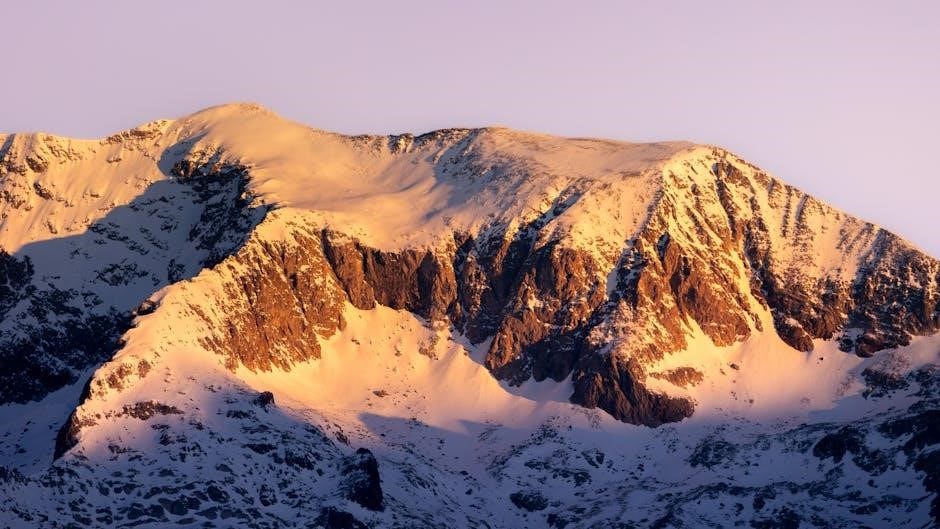
Environmental Considerations
Red Rock Canyon’s unique red rock formations and fragile ecosystems require careful preservation․ Climbers must minimize their environmental impact by following sustainable practices and respecting wildlife habitats;
Permits and Regulations
Climbing in Red Rock Canyon requires adherence to specific permits and regulations to ensure environmental protection and safety․ A day-use pass is mandatory for all climbers, and group sizes are limited to minimize ecological impact․ Commercial guiding operations must obtain special permits, and all climbers are expected to follow Leave No Trace principles․ Regulations also prohibit bolting or damaging rock formations, and certain areas may be closed to climbing during sensitive wildlife seasons․ Compliance with these rules is essential to preserve the natural beauty of Red Rock for future generations․ Always check with local authorities for the most up-to-date information before planning your climb․
Conservation Efforts
Red Rock Canyon is a protected area, and conservation efforts are crucial to maintaining its natural beauty․ The Bureau of Land Management (BLM) and local organizations work together to protect the fragile desert ecosystem․ Climbers are encouraged to participate in initiatives like trail maintenance and clean-up events․ Fixed gear on popular routes is regularly inspected and replaced to reduce environmental impact․ Re-vegetation programs aim to restore areas damaged by human activity․ Educational campaigns emphasize the importance of respecting wildlife habitats and minimizing waste; Climbers are also encouraged to support conservation by reporting unauthorized bolting or damage to the environment․ These efforts ensure Red Rock remains a sustainable destination for climbers and nature enthusiasts alike․
Red Rock Canyon offers a unique climbing experience, blending natural beauty with adventure․ With expert guides and diverse routes, it promises an unforgettable journey for climbers of all levels․
Red Rock Canyon is a world-renowned destination for climbers, offering diverse routes and breathtaking scenery․ The region caters to all skill levels, from beginners to advanced climbers, with sport, traditional, and bouldering options․ Climbing guides play a crucial role in ensuring safety and providing expert knowledge of the terrain․ The best climbing seasons are spring and fall, with summer heat and winter cold posing challenges․ Safety measures, proper gear, and environmental awareness are essential for a successful and sustainable climbing experience․ Guides offer various services, including instruction and route planning, with costs varying based on the service type․ Conservation efforts and permits are in place to protect the area’s natural beauty for future generations․
Encouragement to Visit Red Rock
Red Rock Canyon offers an unforgettable climbing experience, with its stunning red rock formations and diverse routes catering to all skill levels․ Whether you’re a seasoned climber or a beginner, the region provides an ideal setting to challenge yourself and connect with nature․ Professional guides ensure a safe and enriching adventure, while the area’s unique landscapes offer breathtaking views and opportunities for photography․ Beyond climbing, visitors can explore hiking trails, picnic areas, and the vibrant culture of nearby Las Vegas․ Plan your visit to Red Rock and immerse yourself in an adventure that combines physical challenge, natural beauty, and lasting memories․ Don’t miss the chance to experience one of the world’s most iconic climbing destinations․
